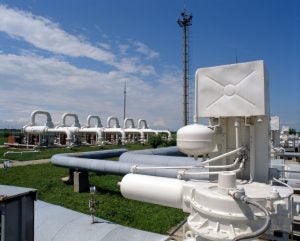New report offers insights to improve environmental integrity and safety of underground gas storage facilities
 By Dan Mueller and Hanling Yang
By Dan Mueller and Hanling Yang
For more than a century, the United States has been storing vast amounts of natural gas in large, underground storage facilities. Underground gas storage is an essential tool for providing reliable natural gas supply, but these facilities must be rigorously designed, maintained and managed to minimize potential failures that can significantly impact our health and environment. This was made abundantly clear in 2015 when a failure at an underground gas storage facility in Southern California sent massive amounts of methane and other toxic chemicals into the air for months on end, resulting in the largest gas leak in modern history.
U.S. UGS regulatory programs and practices continue to improve, drawing on recent lessons learned, and that has important implications for other countries looking to develop and enhance their own gas storage programs.
China is currently looking to address climate change and reduce air pollution by relying less on coal, and turning to other fuels like natural gas. In response, five Chinese agencies issued a new policy to expand underground gas storage. China has ambitious plans in place to roughly double gas storage capacity by 2030. However, if underground storage facilities are not secure and natural gas leaks into the atmosphere, natural gas emissions could significantly lessen any benefits over coal. Therefore, as China evaluates and improves its gas storage regulations, it’s essential for policymakers to draw on the lessons learned here in the U.S.
New report offers insights to improve environmental integrity and safety of underground gas storage facilities Share on XAs a sequel to the whitepaper EDF released last year on the leading management practices of a robust UGS management framework, EDF just published Foundational Elements of Underground Gas Storage Practices – U.S. and China Perspective. It reflects a year-long project in which experts in the U.S. and China collaborated to explore current conditions and practices of UGS in the respective countries, as well as develop a forward-looking perspective on key elements needed to develop a more rigorous and comprehensive UGS regulatory program.
The four cornerstones of a world-class UGS program presented in the first white paper are:
- Proper risk management.
- A health, safety and environment management system.
- Technically competent operations.
- Informed and enforceable regulations.
Building off the four cornerstones, the new report develops key elements of a UGS regulatory management program. Information and analysis are drawn from current technical guidance, recent U.S. federal and state regulatory enhancements, lessons learned from recent facility failures, as well as recommendations by both U.S. and Chinese experts.
While the new report offers specific elements of a strong regulatory program, it is not the end of this joint effort. Further coordinating work is underway to review and evaluate current U.S. and China UGS environmental impact assessment and permitting requirements, processes and procedures. The ultimate goal is to both identify and offer recommendations that further protect our health and environment from potential risks associated with UGS.











